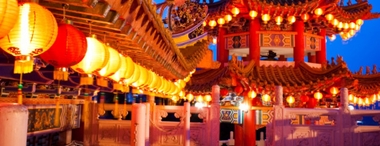
 The year 2013 in the gold investment market will be remembered as the year of China, so we’ve produced a stunning infographic detailing China’s great golden rise to power.
The year 2013 in the gold investment market will be remembered as the year of China, so we’ve produced a stunning infographic detailing China’s great golden rise to power.
In just a few months the world’s largest country will overtake India as the biggest consumer of gold and its gold market continues to break records.
A country that already mines more than 400 tonnes of gold a year, China still demands more physical gold no matter the price. Between January and July this year the Shanghai Gold Exchange delivered more than 1,333 tonnes to gold investors.
In the last 100 years China’s gold mine productivity has climbed from just 4 tons of gold in 1949 to an expected 440 tons this year, none of which is exported. Hong Kong imports have been more than 600 tonnes this year alone, but still more gold is demanded.
Whilst it may appear that China has exploded onto the gold scene, this is by no means the case. China’s ancient monetary history is well documented. They are the world’s oldest scientists when it comes to different forms of money, having being the first to experiment with paper money and different metallic standards. Therefore during an international financial crisis one would imagine that the country with the longest and most diverse monetary history would be the place to turn to for direction.
Global domination in less than a century?
Less than 100 years ago the Shanghai Gold Business Exchange was one of the biggest gold centers in the Far East. Since then gold has gone from being an almost illegal investment to a market that has become increasingly open in modern China.
Whilst the Western world works to keep the paper system upright, China’s experience with fiat money and its concomitant phenomena of debasement and inflation may mean that they are looking to diversify their monetary system. Their recent history certainly suggests as much, as they have been gradually opening themselves up to the world’s most precious marketplace.
Between 1950 and 1995 small changes in China’s gold market were made, a gold jewelry retail market was opened and the Gold Panda was launched. But the first indication that the government was looking to develop the gold market came in 1993. At this point the State changed the price-fixing method for gold from a state-determined price to a floating one.
Between 2000 and 2002 key measures were taken that would provide the foundations for the country’s power in the gold market. In 2000 the Chinese government included the establishment of an open gold market in its five year economic plan, indicating gold is a strategic market. Shortly after the PBOC abolished the monopoly of the gold market and announced a planning and management system to see it forward.
Just 18 months after the new weekly quotation system for the gold price was launched (opening up the gold price to international markets) the Shanghai Gold Exchange officially opened in 2002. It is this exchange that has grabbed the attention of the Western media this year.
The State has also worked hard in the last decade to encourage institutions to participate in the gold market. In 2010 the paper “Guiding opinions on promoting the development of the gold market” was co-authored by several senior figures in the gold market. Amongst other targets commercial banks were asked to be actively engaged in developing China’s national gold market. Bullion producers were targeted for strategic assistance, with banks instructed to offer finance for overseas gold mine purchases and innovation.
….read page 2 HERE












